

Thanks to Carlos Aguilar Julio for assisting with the identification of the species on this page.
Designed by Paul Smith 2006. This website is copyrighted by law.
Material contained herewith may not be used without the prior written permission of FAUNA Paraguay.
Photographs on this web-site were taken by Paul Smith and Laura Tensen and are used with their permission.
FAMILY BELOSTOMATIDAE: GIANT WATER BUGS
Amongst the largest insects in Paraguay, the Giant Water Bugs are also known as Electric Light Bugs on account of the way they are frequently attracted to artificial lights. Members of this family are generally round-bodied, streamlined, somewhat flattened and with greatly developed front legs for seizing prey. The other pairs of legs are often flattened to aid with swimming. They occur in aquatic habitats, favouring those with muddy bottoms and plenty of water weeds. The head possesses large eyes and four-segmented antennae which are concealed in grooves. Short appendages protruding from the tip of the adbomen can be united to form breathing tubes.Giant Water Bugs are capable of flight and are not confined to water. The wings may also be used to trap a layer of air when they submerge. Both nymphs and adults are ferocious predators capable of taking amphibians, fish, snails, insects and the largest species can even take small birds. Prey is captured by ambush or by active foraging. Fast-acting enzymes are injected via the rostrum which liqueify the contents of the prey item and they are then sucked out by the same means.
Click on the images to enlarge them.
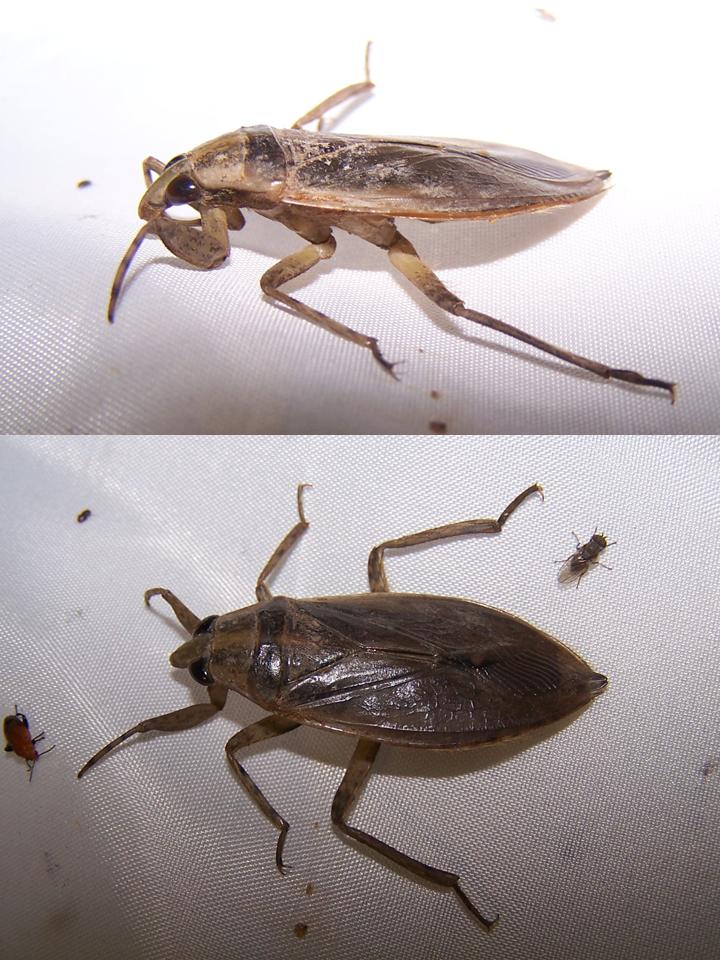 | FIGURE 1 |
|
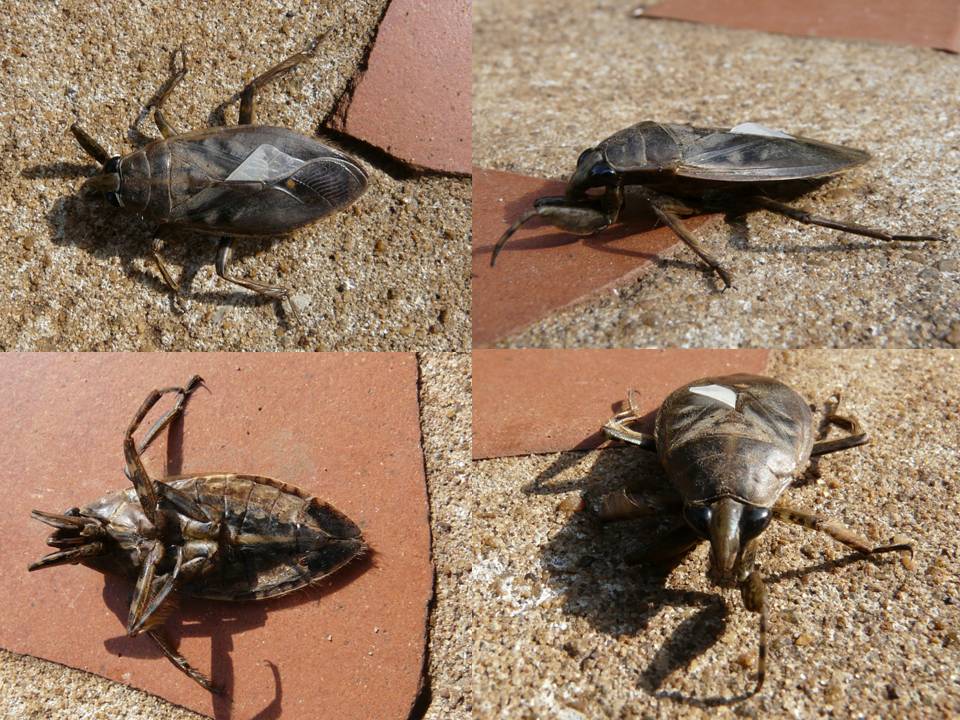 | FIGURE 2 |
|
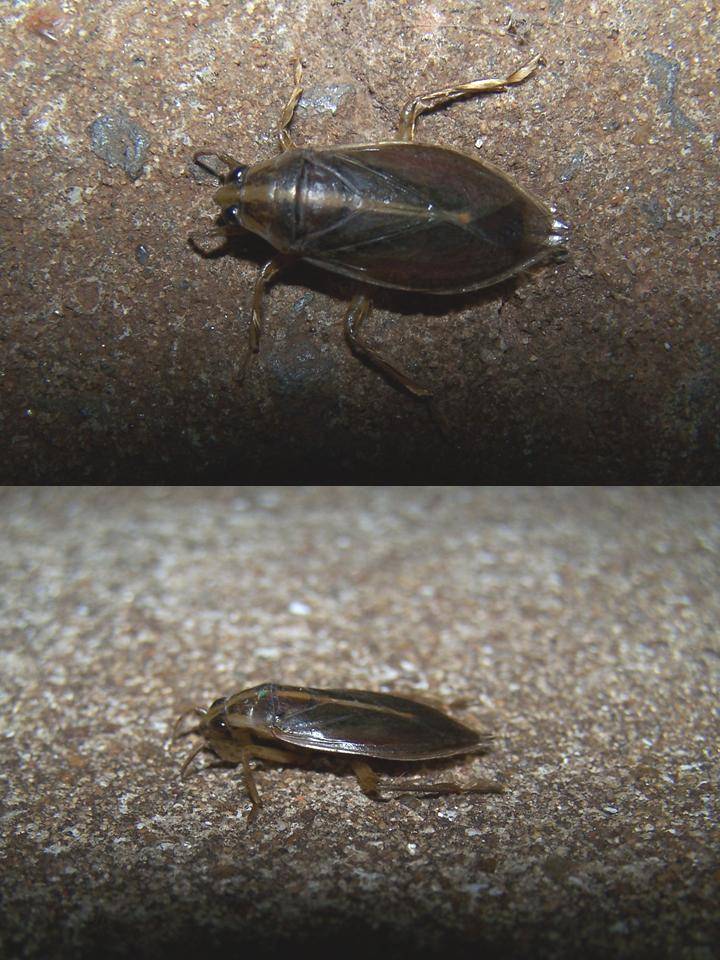 | FIGURE 3 |
|
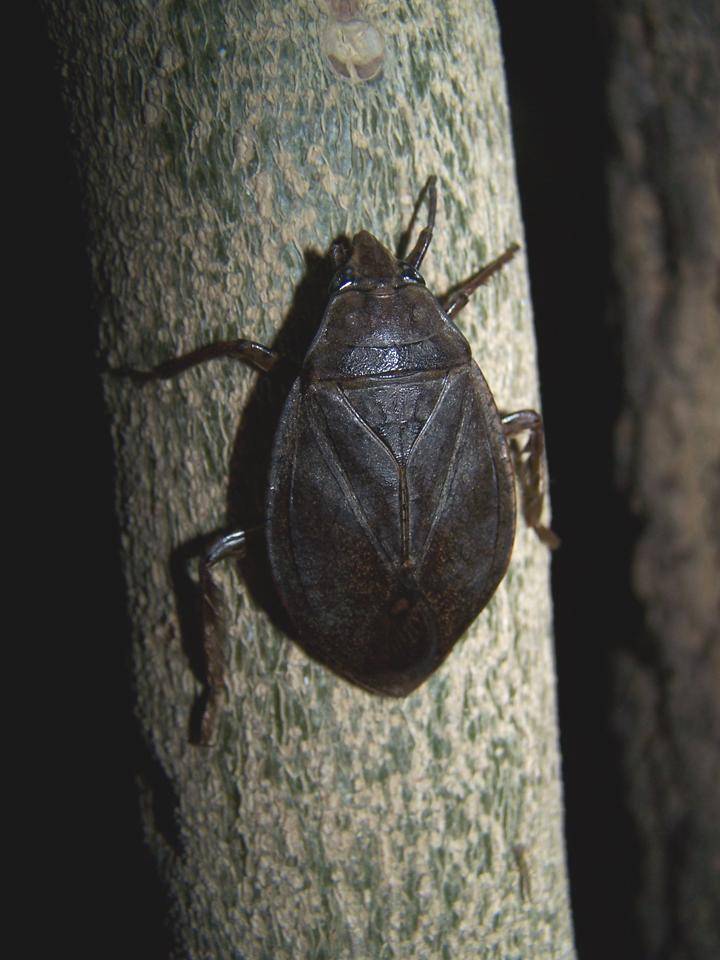 | FIGURE 4 |
|
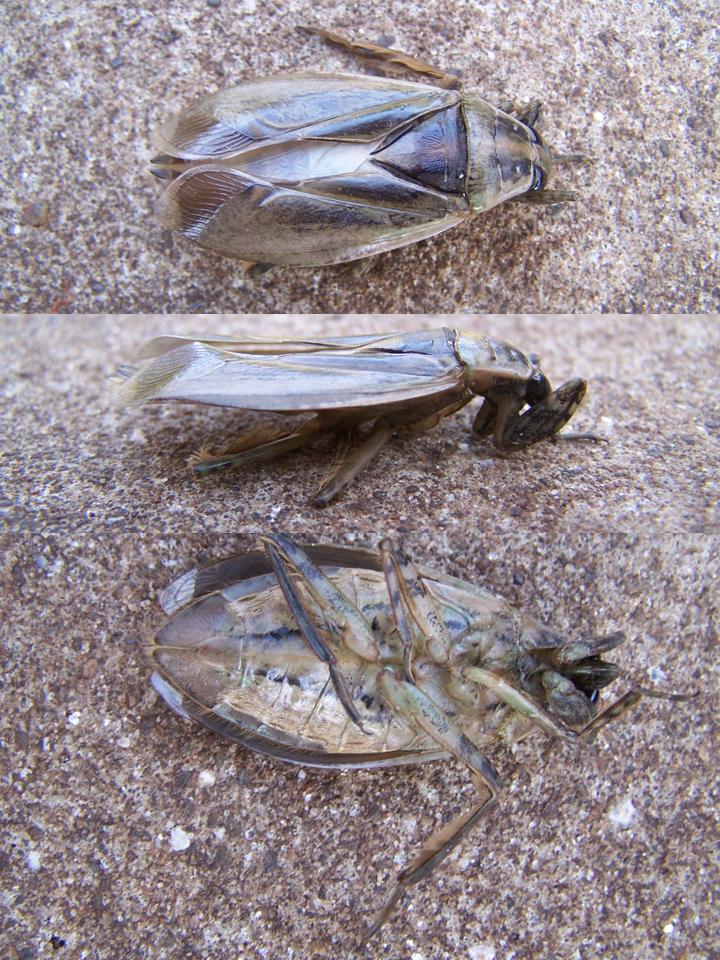 | FIGURE 5 |
|
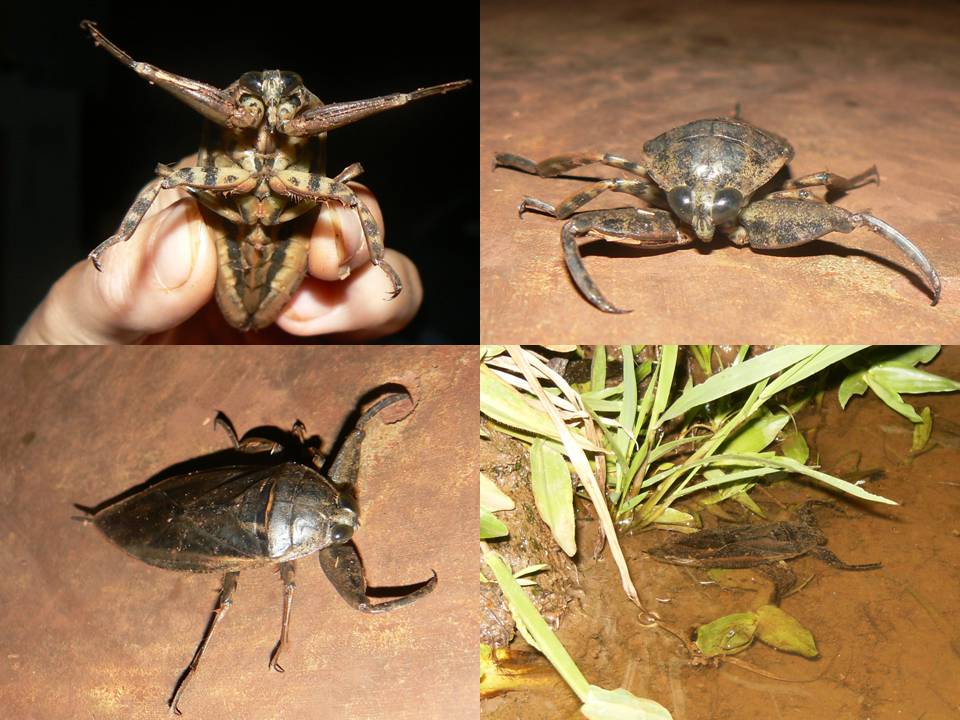 | FIGURE 6 |
|
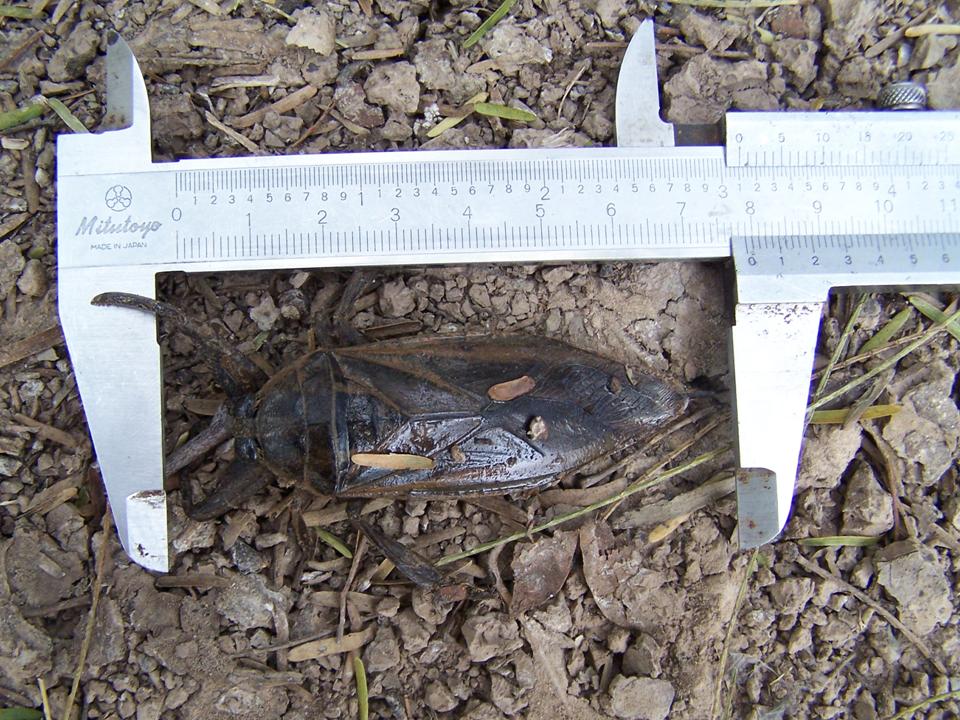 | FIGURE 7 |
|
FIGURE 1 - Unidentified sp A, Cambu Cuá near Pilar, Departamento Ñeembucú (Paul Smith December 2007).
FIGURE 2 - Unidentified sp. A, Encarnación, Departamento Itapúa (Paul Smith July 2008).
FIGURE 3 - Unidentified sp B, Encarnación, Departamento Itapúa (Paul Smith January 2008).
FIGURE 4 - Unidentified sp. C, Fuerte Olimpo, Departamento Alto Paraguay (Paul Smith September 2006).
FIGURE 5 - Unidentified sp.D, Encarnación, Departamento Itapúa (Paul Smith August 2007).
FIGURE 6 - Lethocerus sp, PROCOSARA, PN San Rafael (Laura Tensen April 2008 - ECOSARA Biodiversity Database)
FIGURE 7 - Lethocerus sp., PN Tte Enciso, Departamento Boquerón (Paul Smith July 2006).

